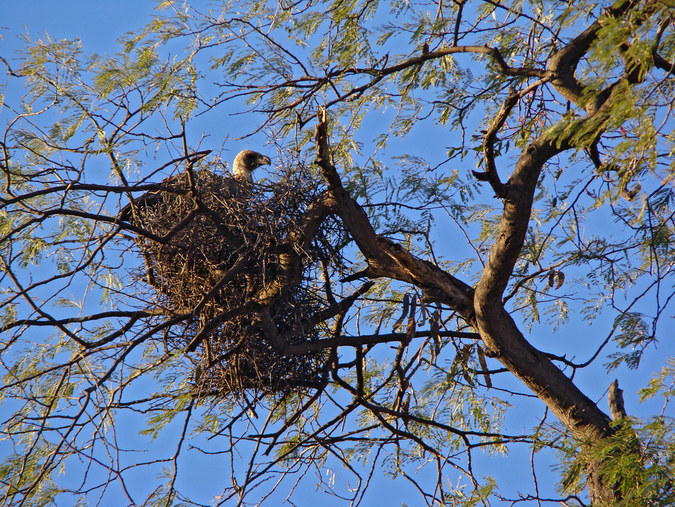
Written by Mr Robin Cook (Elephants Alive’s Big Trees Project Manager) and Dr Michelle Henley (Elephants Alive Director, Co-founder and Principal Researcher)
There is a worrying trend of declining white-backed vulture (Gypis africanus) numbers in Africa, with the significant factors being poisonings (Ogada et al. 2016), poaching (McKean et al. 2013), electrocutions (Van Rooyen 2000) and habitat loss (Bamford et al. 2009). These factors primarily influence adult vultures, thereby having confounding consequences on the vulture populations.
A secondary factor under investigation is a potential shortage of nesting sites. White-backed vultures nest in tall trees in Africa’s savannas, building large nests towards the top of these trees. Concerns have been raised over how African elephants’ (Loxodonta africana) impact may affect white-backed vulture nesting success, and hence, vulture populations (Rushworth et al. 2018).
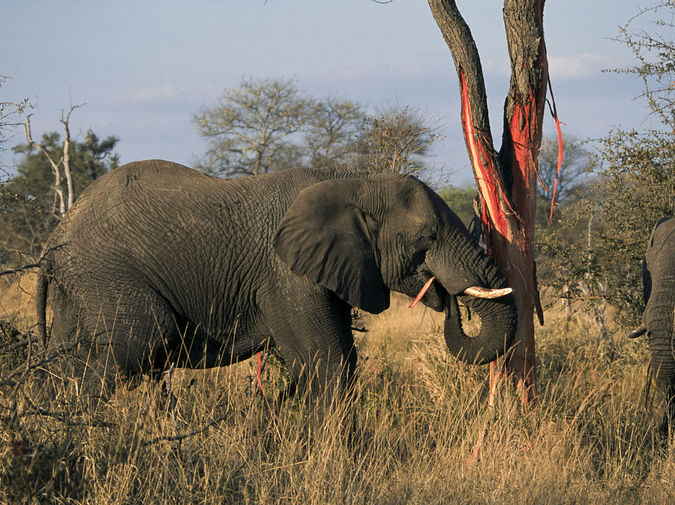
Elephant impact on large tree species is a widely researched and complex topic, as elephant impact differs between elephant sexes (Greyling 2004) and across tree species (Shannon et al. 2008). However, long-term research needs to be carried out on elephants and vultures to understand whether elephants are indeed affecting vulture nesting success.
In the Associated Private Nature Reserves (APNR) of the Greater Kruger National Park, vulture surveys have been carried out by Elephants Alive since 2008. These surveys focus on the survival of vulture nests versus the survival of the trees in which they are nesting. The surveyed reserves included the Klaserie, Timbavati and Umbabat Private Nature Reserves. The first four years of surveys were published by Vogel et al. (2014), with results indicating that vulture nest survival rates decreased far quicker in comparison to the trees in which they nested.


Of all the surveyed trees, 20% had died over the four years, in comparison to 80% of the active nests. Furthermore, it was hypothesised that insect borer activity, in combination with elephant impact, was leading to the slow decline of nesting trees within the APNR.
Elephant impact, i.e. bark-striping, increases the likelihood of borers colonising a tree, which may eventually cause the tree to be hollowed out. This leads to dieback of branches within the top canopy of the tree, which may result in eventual vulture nest collapse (M. Henley personal communication).
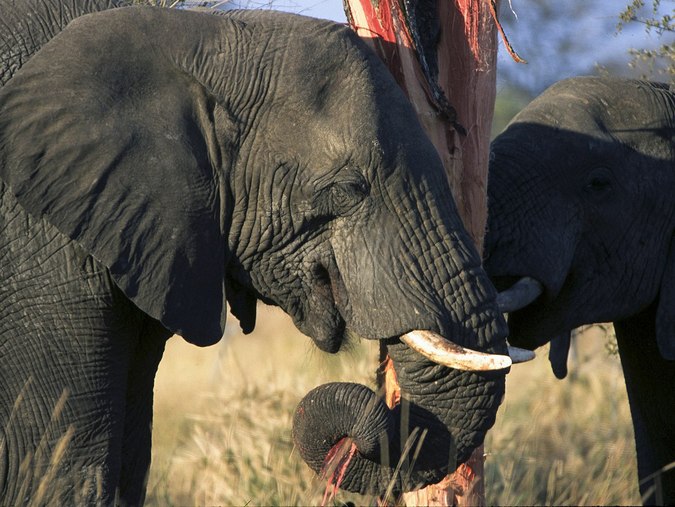
Elephants Alive’s vulture surveys have continued in the APNR on an annual basis, and as of 2018, Balule Private Nature Reserve was added to the surveyed reserves. This allowed us the opportunity to include trees with vulture nests along the Olifants River.
Our 2018 surveys have recorded a minimum of 156 active white-backed vulture nests within the APNR, as well as 42 intact but inactive nests. The majority of nests were recorded in knobthorn (Senegalia nigrescens) and jackalberry (Diospyros mespiliformis) trees, usually in the tallest individuals of these species. However, a total of 12 different tree species contain vulture nests within the APNR.
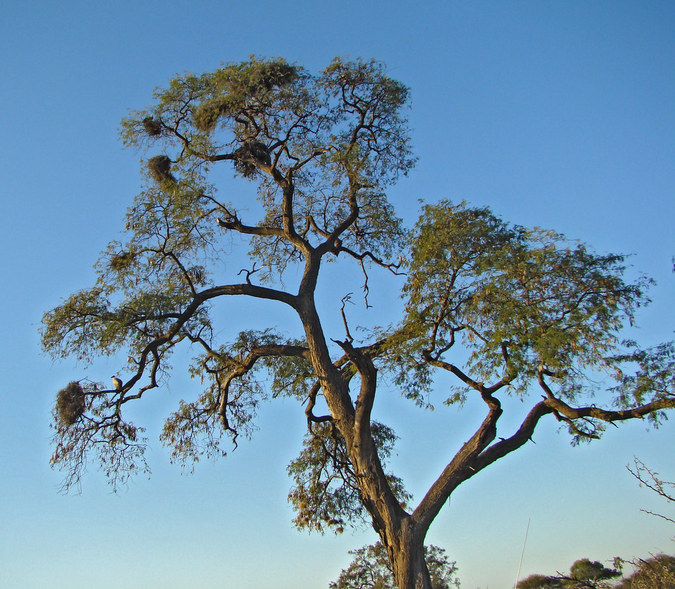
Elephant impact levels also differ amongst the tree species containing vulture nests. This highlights that the tree species may influence the likelihood of a tree with a vulture nest receiving elephant impact. Both knobthorn and marula (Sclerocarya birrea subsp. caffra) trees had the highest levels of elephant impact, while significantly lower impact levels were recorded on the riverine-based jackalberry and apple leaf (Philenoptera violacea) trees.
However, our results still indicate that there is no clear relationship between the number of dilapidated nests and dead trees. Between 2014 and 2018, 50 trees containing vulture nests have subsequently died, in comparison to 110 dilapidated vulture nests.
What is of importance to the future prospects of vulture nesting success is the availability of suitable trees for nesting success. In Kenya’s Masai Mara National Reserve, Kendall et al. (2018) showed that tree availability exceeded the nesting needs for vultures. Our current research will explore this in further depth within the APNR. Furthermore, tree recruitment rate and the survival rate of seedlings is a key factor in the availability of nesting sites in future (Helm et al. 2011).

While our results are indicating that there is no direct relationship between elephant impact and vulture nest survival, we still need to explore how the combination of both elephant impact and borer activity lead to the dieback of upper canopy branches and potential nest collapse. This can only be determined through long term studies such as these in the APNR.
What is encouraging for us is that within the reserves where we have over a decade’s worth of data on trees containing vulture nests, the number of recorded active vulture nests within the APNR has increased over the years. Between 2014 and 2018, Klaserie’s active vulture nests have increased from 63 to 85, while the Timbavati has witnessed an increase from 34 to 47 active nests. With the addition of Balule Private Nature Reserve, we will also be able to understand the relationship between vultures and elephants at a grander scale to aid management in understanding how elephant may impact vultures, and the potential management told which can be put in place for protecting these trees (Derham et al. 2016; Cook et al. 2018).
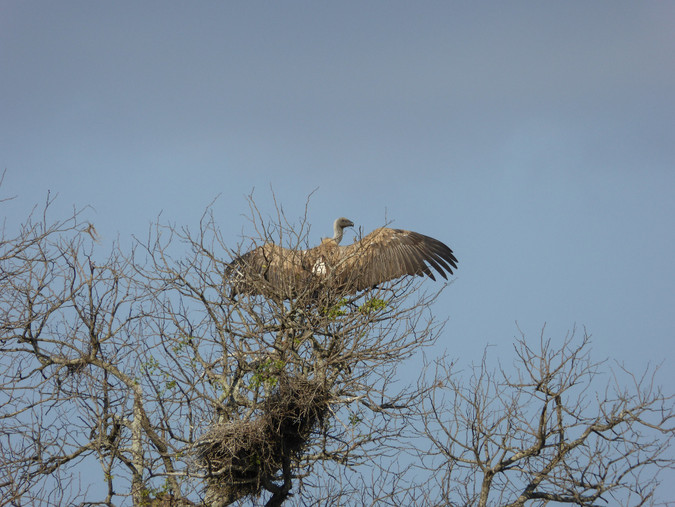
References
• Bamford, A. J., Monadjem, A., Diekmann, M., & Hardy, I. C. (2009). Development of non-explosive-based methods for mass capture of vultures. South African Journal of Wildlife Research-24- month delayed open access, 39(2), 202-208.
• Cook, R. M., Parrini, F., King, L. E., Witkowski, E. T. F., & Henley, M. D. (2018). African honeybees as a mitigation method for elephant impact on trees. Biological Conservation, 217, 329-336.
• Derham, K., Henley, M. D., & Schulte, B. A. (2016). Wire netting reduces African elephant (Loxodonta africana) impact to selected trees in South Africa. Koedoe, 58(1), 1-7.
• Greyling, M. D. (2010). Sex and age-related distinctions in the feeding ecology of the African elephant, PhD thesis, University of the Witwatersrand, Johannesburg.
• Helm, C. V., Scott, S. L., & Witkowski, E. T. F. (2011). Reproductive potential and seed fate of Sclerocarya birrea subsp. caffra (marula) in the low altitude savannas of South Africa. South African Journal of Botany, 77(3), 650-664.
• Kendall, C. J., Rubenstein, D. I., Slater, P. L., & Monadjem, A. (2018). An assessment of tree availability as a possible cause of population declines in scavenging raptors. Journal of Avian Biology, 49(1), jav-01497.
• McKean, S., Mander, M., Diederichs, N., Ntuli, L., Mavundla, K., Williams, V., & Wakelin, J. (2013). The impact of traditional use on vultures in South Africa. Vulture News, 65(1), 15-36.
• Ogada, D., Shaw, P., Beyers, R.L., Buij, R., Murn, C., Thiollay, J.M., Beale, C.M., Holdo, R.M., Pomeroy, D., Baker, N. and Krüger, S.C., 2016. Another continental vulture crisis: Africa’s vultures collapsing toward extinction. Conservation Letters, 9(2), 89-97.
• Rushworth, I. A., Druce, D., Craigie, J., & Coverdale, B. (2018). Vulnerability of vulture populations to elephant impacts in KwaZulu-Natal. Bothalia-African Biodiversity & Conservation, 48(2), 1-10.
• Shannon, G., Druce, D. J., Page, B. R., Eckhardt, H. C., Grant, R., & Slotow, R. (2008). The utilization of large savanna trees by elephant in southern Kruger National Park. Journal of Tropical Ecology, 24(3), 281-289.
• Van Rooyen C.S. 2000. An overview of vulture electrocutions in South Africa. Vulture News 43, 5-22.
• Vogel, S. M., Henley, M. D., Rode, S. C., van de Vyver, D., Meares, K. F., Simmons, G., & de Boer, W. F. (2014). Elephant (Loxodonta africana) impact on trees used by nesting vultures and raptors in South Africa. African Journal of Ecology, 52(4), 458-465.
To comment on this story: Login (or sign up) to our app here - it's a troll-free safe place 🙂.![]()






